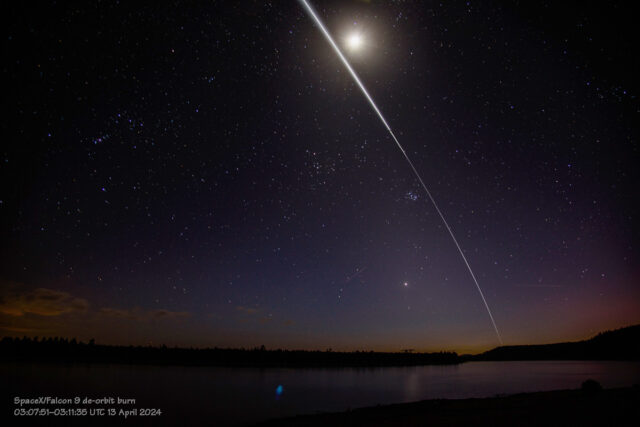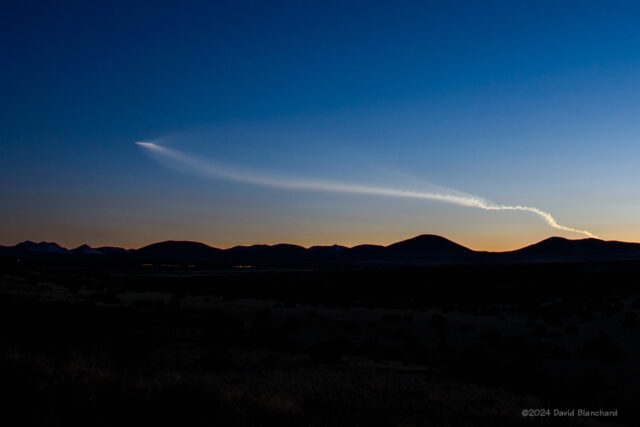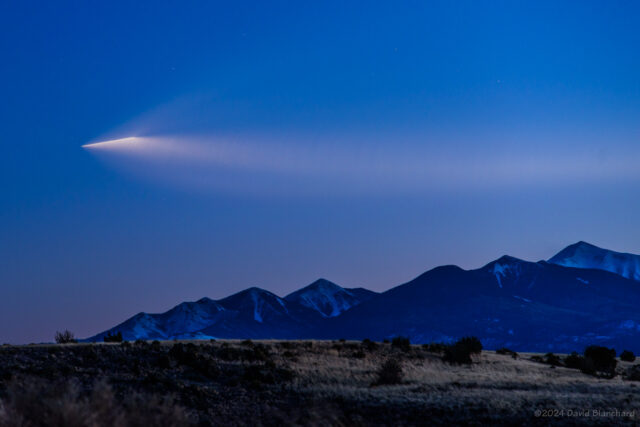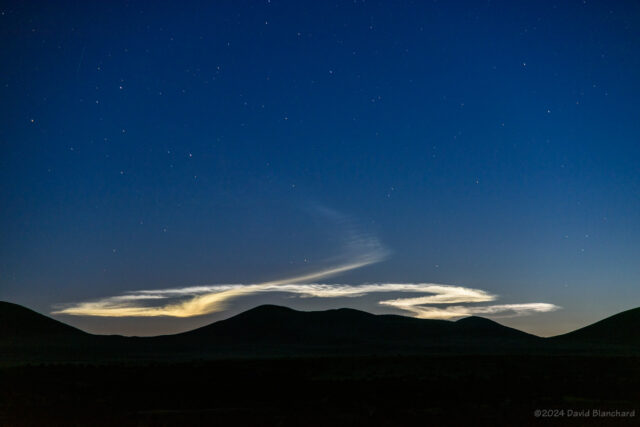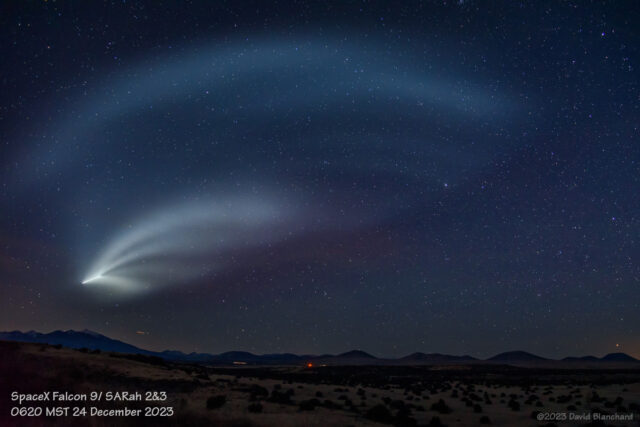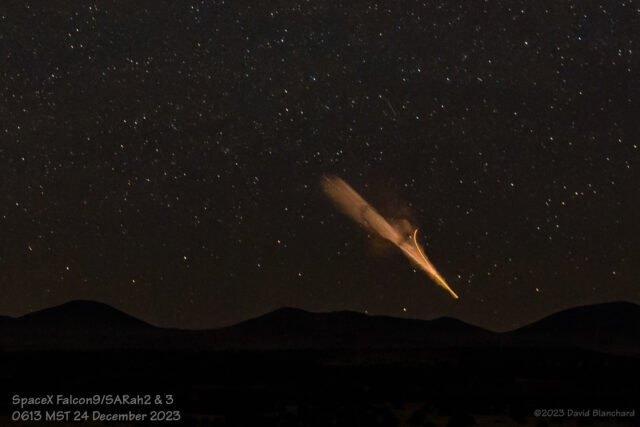Here are a few more SpaceX Falcon 9 deorbit burns observed over Arizona during the latter half of May.

SpaceX has launched frequently during this time period and many of the flights pass over the southwest United States and Arizona. The timing of the deorbit burn is fortuitous as it occurs just as the 2nd stage of the rocket appears above the western horizon and continues until it is near the zenith. This results in very favorable conditions for taking photographs and video of the event.



I have used both ultra-wide angle and fisheye lenses and really like the result from the latter as it is able to capture the lake reflections as well as the entire burn even as it passes overhead. One time I used a short telephoto (80mm); I may try this again.
Some of the images use 30-second exposures while others use a very short 2-second exposure which is useful for creating time-lapse video.
Time lapse video (2-second exposures) of the SpaceX Falcon 9 deorbit burn.
It’s interesting how all the image and videos show a burn that ends as it approaches the zenith followed by a splash of color as it moves overhead and leaving a circular red patch in the sky. It’s possible that the red is from the chemical reaction of the exhaust gases with the ionized air in the ionosphere. This red coloring of the ionosphere has been noted before with launches ascending into orbit so it is possible that the same chemical reaction takes place on descent.
Additional images of SpaceX Falcon 9 deorbit burns: 13 April 2024; 02 May 2024.




